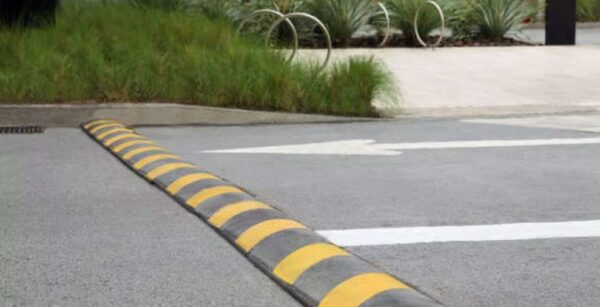Lifestyle
5 things you didn’t know about speed breakers

We’ve all been there– driving through a parking lot or down a regular street when, out of nowhere, a speed breaker makes us slow down.
They might seem like nothing more than an annoying bump in the road, but they actually play an important role in keeping traffic safe.
And while we all know what they do, there’s a lot more to them than you might think. Here are five surprising facts about speed breakers.
1. The brilliant mind behind speed breakers
Have you ever wondered who invented speed breakers? Surprisingly, it wasn’t a road engineer or a traffic planner– it was a renowned physicist. The first real speed breaker came about in the 1950s, thanks to Arthur Holly Compton, who won the Nobel Prize for his work in electromagnetic theory. While he was famous for his scientific contributions, it was his concern for speeding vehicles near his workplace, Washington University in St. Louis, that led him to create the first “traffic control bump” in 1953.
2. Speed breakers go by many names
You might call them speed breakers or speed bumps, but did you know they go by different names around the world? In the UK, they’re humorously called “sleeping police officers” because they make you slow down, just like a real cop would. In New Zealand, they’re known as “judder bars” because of the shaking feeling when you drive over them. Puerto Rico has a more dramatic name– “muerto,” meaning “dead person.” Meanwhile, in Argentina, they’re called “lomos de burro,” or “donkeys’ backs.”
3. What are speed breakers made of?
When it comes to speed breakers, the materials used are more varied than you might think. While asphalt and concrete are the most common choices because of their durability, speed breakers can also be made from rubber, metal, or even recycled plastic. Rubber speed breakers, in particular, have an advantage– they can be bolted down, so they’re easy to move or take out when needed. It’s a smart way road safety has improved over time.
4. Speed bumps vs. speed humps: What’s the difference?
Speed bumps/breakers and speed humps may look alike, but they serve different purposes. Speed bumps, found in parking lots and private roads, sharply slow vehicles to around 5 km/h. Speed humps, seen on public roads, provide a gentler slowdown to about 20 km/h, making them ideal near schools and crossings. Speed breakers aren’t used on public roads as they can be risky for unsuspecting drivers, but they help control speed in areas like apartments and hospitals.
5. Innovative alternatives
In some countries, with new technology, traffic calming has become smarter. Dynamic speed bumps activate only when a vehicle exceeds the speed limit, making them more efficient and less disruptive. Speed cushions, with gaps in between, let larger vehicles like buses and emergency trucks pass smoothly while slowing down smaller vehicles. Speed tables, which are longer humps with a flat middle section, provide a gentler slowdown without the sudden jolt of regular speed bumps.






